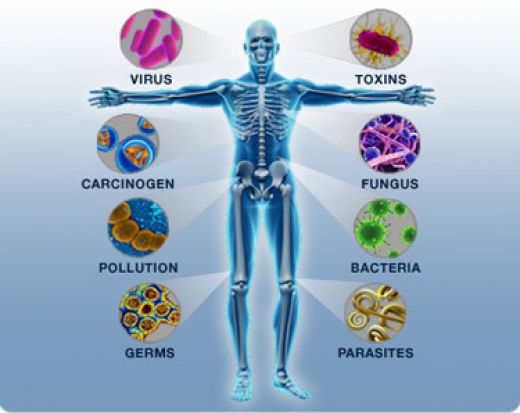1. Our body is a physical housing for our life on earth, home for our organs, systems, mind, consciousness (сознание), emotions and soul. Our skeletal system of bones and joints, connects to a muscular system, then to a nervous system, a circulatory system, a lymphatic system, a respiratory system, an endocrine system, a digestive system, a urinary system and a reproductive system.
2. The human body is an amazing machine. The brain is the organ that makes us human, giving people the capacity for art, language, moral judgments, and rational thought. It's also responsible for each individual's personality, memories, movements, and how we sense the world. The heart is the body's engine room, responsible for pumping blood via a 97,000-kilometer-long network of vessels. Our lungs fuel us with oxygen, the body's life-sustaining gas. The digestive system is the series of tubelike organs that convert our meals into body fuel. In all there's about 9 meters of these pipeworks (трубопровод), starting with the mouth and ending with the anus. Body organs aren't all internal like the brain or the heart. There's one we wear on the outside. Skin is our largest organ—adults carry some 3.6 kilograms and 2 square meters of it.
 3. From the physical and social well-being of an individual to the functioning of an ecosystem, health has many different meanings and applications (употреблений). More than just the absence of disease, health implies a state of well-being. Ever since the origin of life, physical, chemical and biological factors have impacted the health or biological status of living things. And in response life has evolved immune systems, detoxification systems and redundancies to stave off infection, disease, and toxicity.
3. From the physical and social well-being of an individual to the functioning of an ecosystem, health has many different meanings and applications (употреблений). More than just the absence of disease, health implies a state of well-being. Ever since the origin of life, physical, chemical and biological factors have impacted the health or biological status of living things. And in response life has evolved immune systems, detoxification systems and redundancies to stave off infection, disease, and toxicity.
4. As the world ‘health’ becomes more interconnected, and industrialized, diseases never seen in one part of the globe now threaten to devastate (опустошать) human, wildlife and plant populations, while industrial chemicals now contaminate life in the most remote regions. Maintaining health, whether ecosystem, human or microbial arguably presents one of the greatest challenges of the day.












